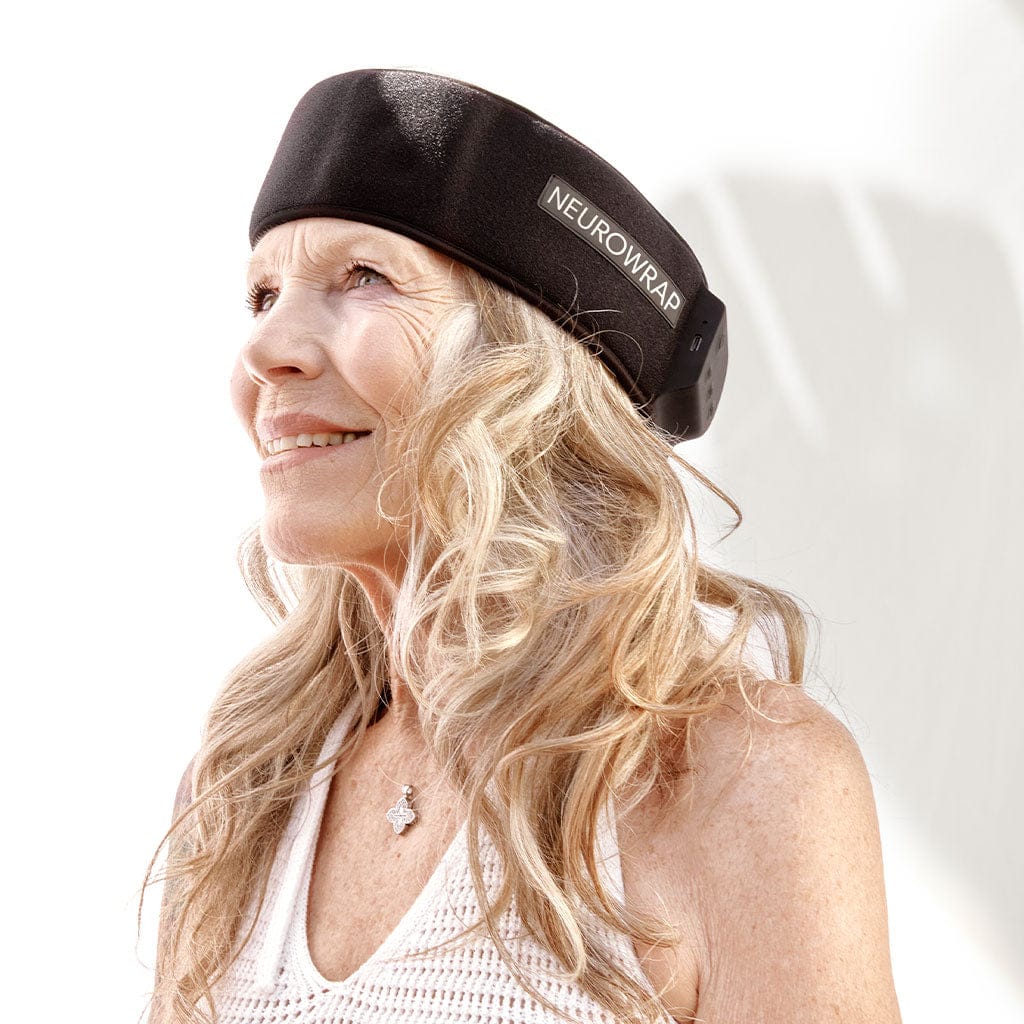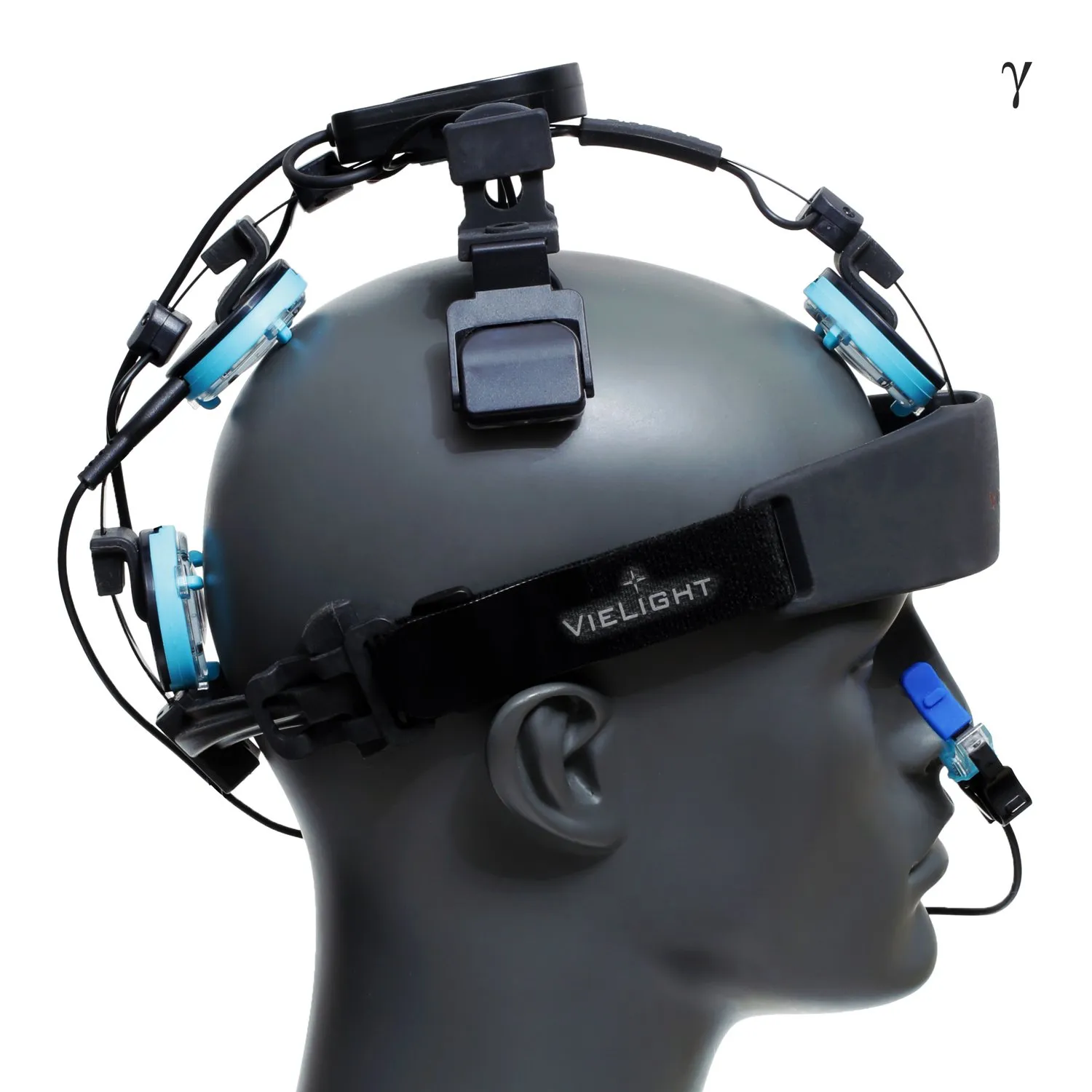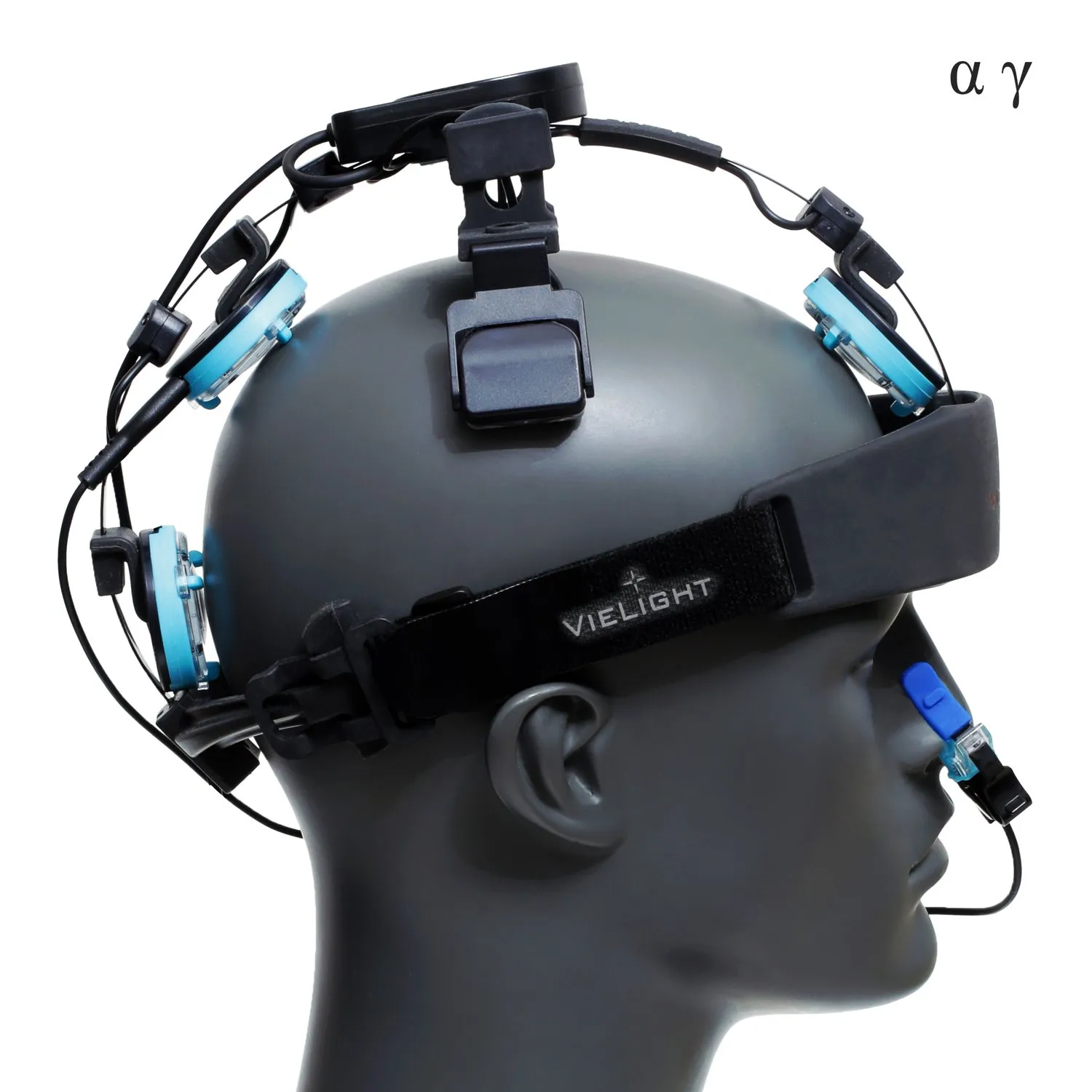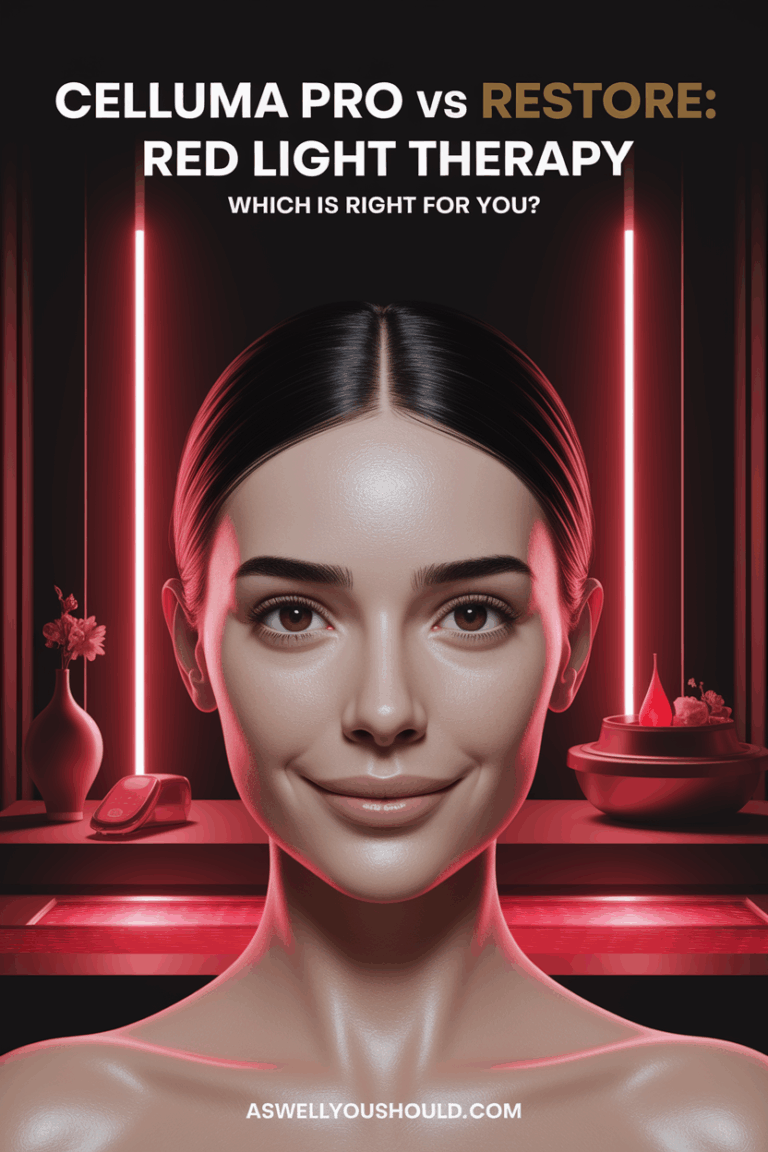3 Best Red Light Therapy for Parkinson’s Devices in 2025 (for Tremor, Gait and Mood)

 Buy Now Our Review
Buy Now Our Review- The NeuroPulse Pro integrates targeted light therapy and Pulsed Electromagnetic Field (PEMF) therapy.
- It helps manage and alleviate symptoms related to headaches.
- The device supports individuals experiencing insomnia.
- PEMF therapy promotes the regeneration of injured cells by enhancing enzyme kinetics and restoring cellular membrane polarization.
- It improves circulation and modifies neurochemical disturbances, leading to a more balanced hormonal and respiratory cell response.
- Red light therapy utilizes low-power red light wavelengths that penetrate the skin without discomfort or heat, impacting cellular energy and various nervous system and metabolic processes.
- It may also improve mood and treat depression.
- The NeuroPulse Pro offers three distinct modes tailored to address a wide range of wellness needs, including cognitive wellness, emotional and sleep support, and physical comfort and neurological care.
- The device is designed to enhance cellular regeneration, improve sleep, and support brain health without discomfort or side effects.
- Some users have experienced more restful sleep, increased physical and mental energy, and improved productivity and brain function.
 Buy Now Our Review
Buy Now Our Review- Modular design delivers laser-like irradiance with the safety of LEDs.
- Medical grade technology is used by everyday people, researchers, and elite athletes.
- Adjustable to target any brain area for personalized therapy.
- Bypasses hair and enables full contact for effective light delivery.
- The patented intranasal photobiomodulation technology delivers near-infrared energy through the nose to the underside of the brain.
- The Neuro Gamma 4 has 5 Vie-LED modules that emit pulsed 810nm near-infrared light at 40 Hz to stimulate brain cells without generating heat.
- Induces a more focused mental state because of its neuromodulating effect on Gamma brain waves.
- 20 minutes per session makes it easy to incorporate into a daily routine.
- May improve focus, memory, mental clarity, and brain energy.
- Offers a nasal gateway to the brain as the olfactory bulb is directly connected to the brain regions responsible for keeping long-term memories, and the ventromedial prefrontal cortex is vital for cognitive processes
- Backed by a 2-year warranty and 6-month return policy, providing peace of mind.
- The intranasal applicator allows the device to bypass the blood-brain barrier for direct access to brain tissue.
USE COUPON EMFCHANNEL FOR 10% OFF
 Buy Now Our Review
Buy Now Our Review- Modular design delivers laser-like irradiance with the safety of LEDs.
- Alpha mode induces a relaxed mental state.
- Gamma mode induces a focused mental state.
- Patented intranasal photobiomodulation technology delivers near-infrared energy through the nose to the underside of the brain .
- 5 Vie-LED modules emit pulsed 810nm near-infrared light at 10 Hz (Alpha mode) and 40 Hz (Gamma mode) to stimulate brain cells without generating heat .
- Adjustable to target any brain area for personalized therapy .
- Bypasses hair and enables full contact for effective light delivery .
- 2-year warranty and 6-month return policy provides peace of mind .
- 20 minutes per session makes it easy to incorporate into a daily routine .
- May improve cognition, memory, and functional creativity .
- May increase focus, information processing, memory, and brain energy levels .
- May offer support for mindfulness, learning, relaxation, and sleep improvement.
USE COUPON EMFCHANNEL FOR 10% OFF
The challenge of Parkinson’s disease is more than the uncontrollable tremors and stiff muscles. The symptoms of Parkinson’s disease also include non-motor symptoms like depression, sleep disturbances, and cognitive impairments. While there is no cure yet, there are therapies that reduce symptoms.
One of these tested home treatments is red light therapy (or “photobiomodulation,” as scientists call it). After a series of neurological studies over the past 15 years, we know that the best red light therapy for Parkinson’s disease uses 810 nm near-infrared light pulsed at 40 Hz.
Light therapy is an effective therapy for reducing Parkinson’s symptoms. I analyzed a few red light therapy options that meet these criteria and will show you now. I chose headsets and neoprene wraps to recommend. There are no helmets on my recommendation list at the moment. I explain these choices at the bottom of this article.
First, let’s look at the devices I do recommend. The best red light therapy for Parkinson’s disease:
- Best Budget and Most Options: Nushape Neuropulse PRO
- Best Science-Backed with Multiple Options: Vielight Neuro Duo
- Best Science-Backed with Targeted Features: Vielight Neuro Gamma
Best Red Light Therapy for Parkinson’s Disease
There is more successful science in red light therapy for dementia than for Parkinson’s. However, much of what we know about red light therapy for dementia also applies to Parkinson’s Disease! The carryover from dementia to Parkinson’s is that we know the light is reaching the brain and having multiple positive effects.
Mouse models, human experiments, and clinical experience show that the therapy reduces tremor severity and duration, improves mobility and stability, and even reduces low mood and anxiety.
Plus, there have been no side effects reported.
You should look for these benefits:
- Reduced gait freezing
- Steadier mobility
- Less tremor
- Clearer thinking
- Less depression and anxiety
- Better sleep
- Better memory
- Improved speech
- Reduction in dementia diagnosis scores
- Results start in one to 4 weeks (often after one session)
The most accurate way to determine if it will work for you is to try it. I include the return window and procedures for the top device picks below. This way, you can calculate exactly what your risk is in trying red light therapy for Parkinson’s.
The devices in this article share these benefits:
- Portable
- Non-invasive
- No side effects
Therapy Wrap’s Neuropulse PRO Overview
The Neuropulse uses the red light therapy specifications used in scientific trials that have been significantly successful in Parkinson’s Disease, brain injury, and dementia subjects. It uses 810 nm infrared pulsed at 10 or 40 Hz, as in the scientifically validated Vielight Neuro Duo (below).

This technology improves the brain’s energy production (ATP), blood flow, and brainwave activity. ATP provides energy, blood flow, oxygen, and nutrition for repair.
Priced at less than $1,000, the Neuropulse offers a more affordable alternative to the Vielight Neuro Duo, which costs over $2,000. The price difference is attributed to the scientific evidence backing the Vielight’s effectiveness, which the Neuropulse lacks. But the Neuropulse adds pulsed electromagnetic fields (PEMF) therapy, which has similar biological effects as red light therapy in promoting cellular health and repair. As with light therapy, PEMF is not patentable, so your doctor never heard of it. However, the PEMF science shows that it relieves symptoms of neurodegeneration and brain injury.

The Neuropulse is made of neoprene, a soft but strong fabric that is comfortable to wear. I have a Nushape wrap and a Vielight headset. The Nushape is much more comfortable. Nushape offers a 30-day return period with no restocking fee, encouraging users to try the device and observe results within this timeframe. The product comes with a 1-year warranty.
Neuropulse PRO Key Benefits
You should notice substantial benefits in the 30-day return window, making the Neuropulse risk-free to try.
- It’s comfortable even when wearing it for 20 minutes.
- It has the exact red light therapy specifications as the Vielight Neuro Duo.
- Therapy Wrap (Nushape) has a 100% refund if the device is returned in 30 days.
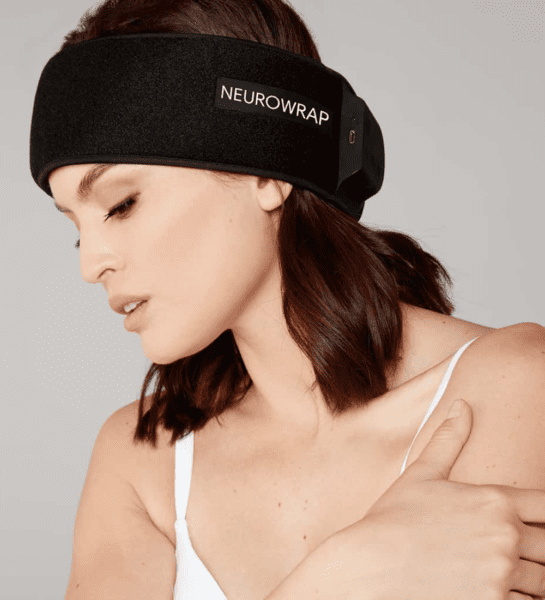
Nushape Neuropulse PRO Pros and Cons

My Take
The Neuropulse PRO has the same wavelengths and pulsation options as the scientifically validated Vielight Duo but at a much more affordable price. It’s also more comfortable to wear. Neuropulse adds PEMF therapy, which is also proven to help with cellular health significantly. PEMF is an optional feature, but you have it once you decide it’s something to add to your routine. The Neuropulse is my favorite for a comfortable, more affordable red-light therapy for Parkinson’s disease.
Vielight Neuro Duo Overview
The Vielight Neuro Duo combines two Vielight devices into one so that you benefit from both in one device. It combines the Vielight Neuro Alpha and Gamma technologies. The Neuro Duo uses 810 nm infrared light pulsed at 10 Hz (Alpha) or 40 Hz (Gamma) to four strategic areas on the head, and a fifth application is applied through the nose.
The 40 Hz pulsation entrains the neurons to fire within the Gamma range, improving memory and speech. Gamma brainwaves are often clinically low in neurodegenerative disease patients. The Gamma is energizing, so use it in the morning.

The Alpha setting entrains the brainwaves to a calm but creative state. It is helpful in the afternoon and sundown and for people with anxiety or insomnia. Improving alpha amplitude correlates with better task management without anxiety. In addition to helping with Parkinson’s symptoms, the Duo supports cognitive health, memory, speech, sleep, anxiety, and depression. It significantly improved cognition, helping with brain fog, depression, and symptoms of PTSD.
Vielight Neuro Duo Key Benefits
- Multiple successful human behavior and imaging studies
- Significant gains were seen in dementia and brain injury subjects.
- Vielight is the leader in red light therapy for the brain.
Vielight Neuro Duo Pros and Cons

My Take
The Vielight Duo advantage is extensive scientific testing of two significant Parkinson’s technologies. You get Alpha and Gamma pulsation and 810 nm infrared photobiomodulation (red light therapy). On the downside, the headset gets slightly uncomfortable (for me, anyway) at around 15 minutes. It’s not bad enough that I wouldn’t use my Vielight, but it’s a consideration for some users. To minimize your risk, Vielight gives you a six-month return period. There is a 20% restocking fee. So, for a few hundred dollars maximum risk, you get to try the Duo for six months. That is a fair deal.
No device has more positive science backing its use than the Alpha and Gamma technologies in the Vielight Neuro Duo, significantly improving cognition. It is a significant investment, but the results are better than those achieved with pharmaceuticals.
Vielight Neuro Gamma Overview
The Vielight Neuro Gamma is becoming the de facto standard in red light therapy for the brain. After years of selling the Neuro Alpha, Gamma, and Duo, Vielight has found that the Gamma is most suitable for various brain-related issues. The Gamma is the most suitable for Parkinson’s and is cost-effective within the Vielight Neuro line.
The Gamma uses 810 nm infrared pulsing at 40 Hz. The pulsation entrains the brainwaves to the gamma state. Gamma brainwaves are often deficient in neurodegenerative disorders. The entrainment is a therapeutic effect in addition to the device’s red light therapy. The 40 Hz pulsation not only promotes brainwave activity but also plays an essential role in triggering the activity of microglia. Once activated, microglia are the brain’s maintenance cells that help clear out neural debris and plaques.
Thus, by stimulating microglial cleanup activity, the Vielight Neuro Gamma is thought to alleviate the burden of stocked waste products in the brain.
Vielight Neuro Gamma Key Benefits
- Multiple successful human behavior and imaging studies
- Significant gains were seen in dementia and brain injury subjects.
- Vielight is the leader in red light therapy for the brain.
- It costs less than the Neuro Duo.
Vielight Neuro Gamma Pros and Cons

My Take
Gamma is less expensive than Duo but retains the key benefits of a more expensive device. It is the best Vielight choice for Parkinson’s at a lower price. I consider the Neuro Gamma to be superior to any pharmaceutical interventions.
How Does Red Light Therapy for Parkinson’s Disease Work?
Years of accumulating evidence show that red light therapy has significantly helpful effects on neurodegenerative disorders. Its effects are universal because much of its activity centers in the mitochondria.
With disease and age, mitochondria falter and go offline. We lose the ability to bring energy to injured tissues, which, as a result, remain in a constant state of inflammation. Red light therapy reduces inflammation through multiple means, including triggering signaling pathways.
However, its strength is in supplying energy to the healing process so the immune system can naturally retreat from injuries. The reduced inflammation and repaired tissues result in healthier brains. This is one of the many reasons that scientists believe red light therapy for Parkinson’s will be as successful as using the technology for dementia and brain injury.
Red light therapy improves:
- ATP (energy production)
- Vasodilation (blood flow)
- Autophagy (garbage collection)
- Firmicutes to Bacteroidetes (F:B) ratio (gut bacteria profile)
There are more successes in dementia studies than in Parkinson’s. I believe the reason is partly because Parkinson’s studies are newer; they are still being refined. Clinically, however, the Parkinson’s results have been outstanding. Medical device companies and clinical practitioners report improvements in primary Parkinson’s symptoms. In science, the gains are primarily in animal models. In clinical settings, there are exciting anecdotal reports of improvements. Together, these gains include improvements in:
- Gait freezing
- Mobility
- Tremor
- Akinesia
- Gait
- Swallowing
- Speech
- Facial animation
- Fine motor skills
- Sense of smell
- Social confidence
How to Choose Red Light Therapy for Parkinson’s
I would choose the Neuropulse PRO for its comfort and price. You might agree or want the device with the most options and scientific backing. Here is a rundown of each choice.
Table: Feature Comparison
The Vielight Gamma, Vielight Duo, and the Nushape Neuropulse should perform equally well in reducing Parkinson’s symptoms. The Duo and Neuropulse include an Alpha pulsation feature, making them better at helping with anxiety and insomnia than the Vielight Gamma.
The Neuropulse is much more comfortable than the Vielight models. It is also easier to use and cheaper. But the Vielights are the subject of multiple published studies, justifying the higher prices.
Table: Strengths and Weaknesses
The benefits found in the table below are based on the technologies used in each product. For example, Vielight Alpha can help with Parkinson’s Disease, but you can expect even better results using Vielight Gamma, Vielight Duo, or Nushape Neuropulse PRO.
Neuropulse Pro
The Neuropulse is comfortable, lightweight, and more cost-effective than other choices. It has the same red light therapy features as the Vielight Neuro Duo. It costs less than half the Duo’s price. It is a comfortable neoprene wrap rather than a metal headset.
Vielight Neuro (Duo or Gamma)
Choose a Vielight Neuro to get the most proven and scientifically validated device. The Neuro Duo has the most technology for attacking Parkinson’s on several fronts. Neuro Gamma is the most important part of the Duo, but it is at a lower cost.
Symbyx Biome
I would also encourage you to look at the Symbyx Biome devices. I will be publishing more on Symbyx shortly. Dr. Ann Liebert has conducted multiple excellent studies on red light therapy for Parkinson’s. She is also a Symbyx co-founder. The clinical trial info is in the references section below. Check out the Symbyx Biome.
How to Get a Crazy Cheap Parkinson’s Brain Light
Next up is just an idea with no promises. You could get a cheap red light therapy bulb and give that a test. A device like the Wolezek bulb will do. Put it an inch from the scalp for two to three minutes per spot. After each spot, move to the next place for two to three minutes. Cover the scalp as much as you can.

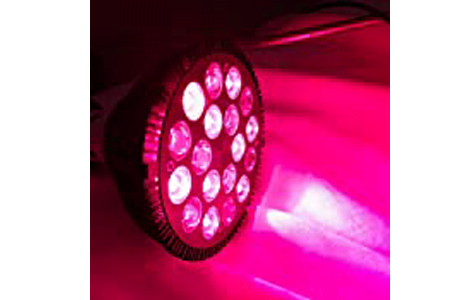
Then? See how the patient feels! There’s no science for this method except that the bulb matches what’s working in science. It’s about the same risk-reward ratio as the Nushape but even cheaper.
I have several bulbs like this that I can sell or give away. Contact me. I have done this protocol on the sides of my head and at the same level as the eyes but back a bit. I’ve felt clearer and calmer after a session. Placebo? Maybe. Infrared coziness? Yes, that is probably part of it.
What About Light Therapy Helmet Options?
A few light therapy helmet options are worth investigating. I know of two that are not. When friends tested them, they found that their irradiances did not meet the specifications as advertised. Due to this discrepancy, I would hesitate to recommend them for Parkinson’s therapy purposes. You can contact me for more information.
Can light therapy be used at home for Parkinson’s, and is it safe?
Light therapy can be efficiently and safely used as a home treatment for Parkinson’s disease. Devices like the Nushape Neuropulse, Vielight Neuro Gamma, and Symbyx Neuro Light Therapy Helmet are designed for easy use and offer a painless treatment option that does not interfere with standard Parkinson’s Disease medications.
Does red light therapy have any side effects for Parkinson’s patients?
A: Red light therapy is generally considered safe, with minimal to no side effects reported in clinical trials. Unlike some Parkinson’s treatments, it is a non-invasive, painless approach. However, individual experiences may vary, and patients must consult their healthcare provider before beginning any new therapy.
What improvements have been observed with red light therapy in Parkinson’s patients?
Patients using red light therapy have shown improvement in several areas, including enhanced motor function, better facial expression, and increased dopamine production. Studies led by Ann Liebert, Geoffrey Herkes, and Wayne Markman have documented these benefits, highlighting how light therapy contributes to alleviating the motor symptoms of Parkinson’s disease.
Is there scientific evidence supporting red light therapy as a treatment for Parkinson’s?
A growing body of scientific evidence supports red light therapy for Parkinson’s. Research confirms that transcranial light therapy can lead to a significant improvement in the symptoms of Parkinson’s disease. Studies have shown that light therapy, especially methods that target the nervous system directly, can serve as an effective complementary therapy for reducing Parkinson’s symptoms.
References
- Bicknell B, Liebert A, Borody T, Herkes G, McLachlan C, Kiat H. Neurodegenerative and Neurodevelopmental Diseases and the Gut-Brain Axis: The Potential of Therapeutic Targeting of the Microbiome. Int J Mol Sci. 2023 May 31;24(11):9577. doi: 10.3390/ijms24119577. PMID: 37298527; PMCID: PMC10253993.
- Bicknell B, Liebert A, Herkes G. Parkinson’s Disease and Photobiomodulation: Potential for Treatment. J Pers Med. 2024 Jan 19;14(1):112. doi: 10.3390/jpm14010112. PMID: 38276234; PMCID: PMC10819946.
- Bicknell B, Liebert A, McLachlan CS, Kiat H. Microbiome Changes in Humans with Parkinson’s Disease after Photobiomodulation Therapy: A Retrospective Study. J Pers Med. 2022 Jan 5;12(1):49. doi: 10.3390/jpm12010049. PMID: 35055364; PMCID: PMC8778696.
- McGee C, Liebert A, Herkes G, Bicknell B, Pang V, McLachlan CS, Kiat H. Protocol for randomized controlled trial to evaluate the safety and feasibility of a novel helmet to deliver transcranial light emitting diodes photobiomodulation therapy to patients with Parkinson’s disease. Front Neurosci. 2022 Aug 17;16:945796. doi: 10.3389/fnins.2022.945796. PMID: 36061601; PMCID: PMC9428720.
- McGee C, Liebert A, Bicknell B, Pang V, Isaac V, McLachlan CS, Kiat H, Herkes G. A Randomized Placebo-Controlled Study of a Transcranial Photobiomodulation Helmet in Parkinson’s Disease: Post-Hoc Analysis of Motor Outcomes. J Clin Med. 2023 Apr 13;12(8):2846. doi: 10.3390/jcm12082846. PMID: 37109183; PMCID: PMC10146323.

